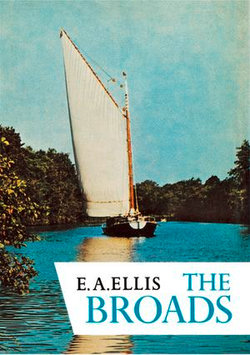The Broads discusses the history of the Broads, the people who come into contact with and influence these waterways, and what the future holds.
The unique complex of eastern English wetlands known as the Norfolk Broads is an outstanding example of Man’s exploitation of nature: the Broads are almost entirely artificial, waterlogged pits left by medieval turf-cutters. Largely owing to their origin they are astonishingly varied. Some contain fresh water, some salt, others are brackish. Some have sharply-defined banks, heavily wooded; others are set in mud-banks, covered in reeds and bulrushes. A few are deep, more are shallow, some are almost entirely overgrown, no longer open water but swamp. A few are part of river courses, most are included in drainage systems, a number are completely land-locked. Some are private, but many more are open to the public. This variety of shape, size and setting is reflected in the fantastic richness of their natural history. they provide a setting for multitudinous species of birds, of insects, of flowers and of grasses; some of these, like the swallowtail butterfly, can be seen nowhere else in this country.
Mr Ellis, a leading authority on the region, owns and lives on Wheatfen Broad. Over many years he has compiled, with the help of other experts, this general guide to the natural history of the Broads. For the tourist there is a lively account of the history and nature of the Broads, what they are and what they contain, which will both help to identify the obvious and suggest things worth looking for. For the naturalist there are also detailed lists of broadland species, both flora and fauna, including a unique long appendix on broadland insects. As with all New Naturalist regional volumes, the book is fully illustrated with maps, diagrams and photographs.



Share This eBook: